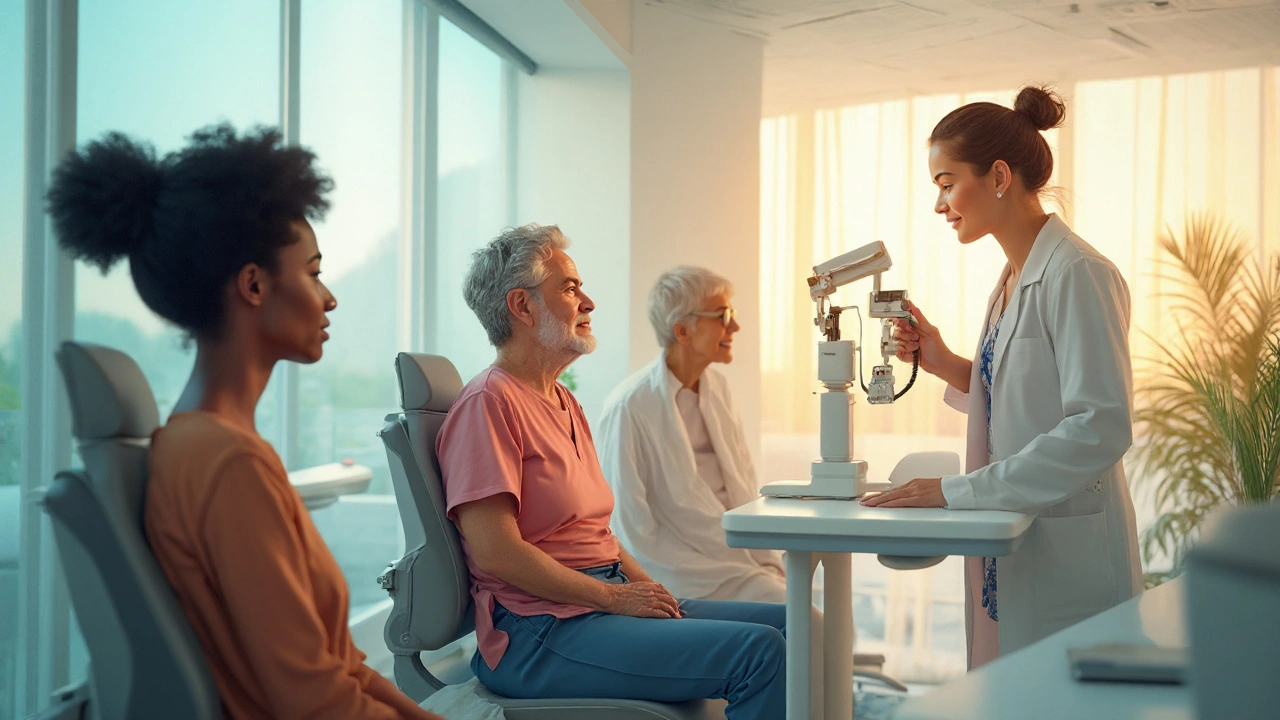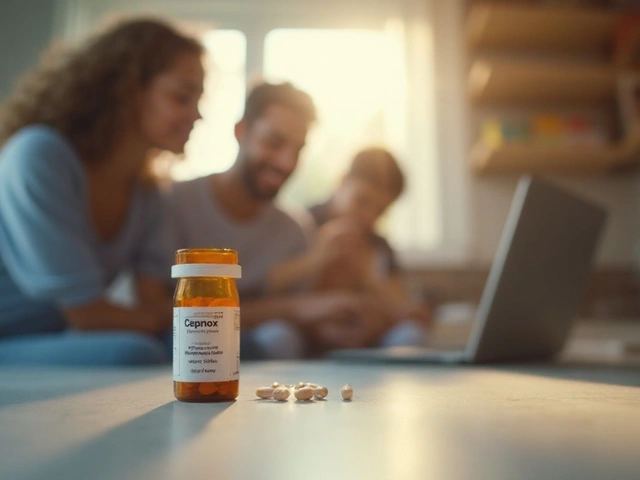What Is High Eye Pressure and Why It Matters
High eye pressure, also called ocular hypertension, is when the fluid inside your eye builds up and pushes against the eye’s walls. It isn’t a disease by itself, but if it stays high for a long time it can damage the optic nerve and lead to glaucoma – a leading cause of vision loss.
The good news? Most people with high eye pressure don’t feel any pain or notice anything wrong until a check‑up catches it. That’s why regular eye exams are a must, especially if you’re over 40 or have a family history of glaucoma.
Common Causes and Risk Factors
Several things can raise the pressure inside your eye. A major factor is the drainage system that removes fluid (called aqueous humor). If the drainage becomes blocked or slows down, pressure spikes. Here are a few typical culprits:
- Age: Pressure tends to rise as you get older.
- Family history: If a parent or sibling has glaucoma, you’re more likely to develop high pressure.
- Near‑sightedness (myopia): People with strong nearsightedness often have higher eye pressure.
- Eye injuries or surgery: Trauma can scar the drainage channels.
- Medications: Steroid eye drops and some oral steroids can push pressure up.
Even lifestyle choices play a role. Studies show that people who smoke, drink too much caffeine, or have uncontrolled high blood pressure are at higher risk.
How to Spot High Eye Pressure Early
Because the condition usually has no symptoms, the only reliable way to know your eye pressure is through a test called tonometry. Your eye doctor shines a quick puff of air or uses a tiny probe to measure the pressure in millimeters of mercury (mmHg). Normal pressure sits between 10 and 21 mmHg; anything above that flags a problem.
If you do notice any warning signs, don’t ignore them:
- Blurry vision that comes and goes
- Seeing halos around lights
- Eye pain, especially after rubbing your eyes
- Frequent headaches
These symptoms can also point to other eye issues, so schedule an appointment right away.
Practical Ways to Lower Your Eye Pressure
Once high pressure is confirmed, there are several steps you can take to bring it down and keep it low.
1. Prescription eye drops – Most doctors start with medication that improves fluid drainage (like prostaglandin analogs) or reduces fluid production (beta‑blockers). Use them exactly as directed; missing doses can let pressure creep back up.
2. Lifestyle tweaks – Cut back on caffeine, quit smoking, and keep your blood pressure in check. A balanced diet rich in leafy greens, fish, and antioxidants supports overall eye health.
3. Stay active – Regular aerobic exercise (walking, cycling, swimming) can lower eye pressure a few points. Just avoid extreme activities that involve head‑down positions, like heavy lifting.
4. Laser therapy – If drops aren’t enough, a laser procedure called trabeculoplasty can open up the drainage pathways. It’s quick, usually done in the office, and has a short recovery time.
5. Surgery – In rare cases, surgeons create a new drainage route with a tiny tube or a filtering bleb. It’s effective but reserved for stubborn cases.
Don’t forget to keep a record of your eye pressure numbers. Many patients notice a pattern – pressure may be higher in the morning and drop a few hours later. Sharing that pattern with your doctor helps fine‑tune treatment.
When to See an Eye Doctor
If you belong to any high‑risk group, aim for an eye exam at least once a year. Even if you feel fine, a quick pressure check can catch problems early. If you’ve been diagnosed with high eye pressure, follow up as your doctor recommends – usually every three to six months.
Remember, high eye pressure is manageable. With regular check‑ups, the right meds, and a few healthy habits, you can protect your vision and stay ahead of glaucoma.
Learn what ocular hypertension is, why it happens, how to spot it early and the most effective treatment options to protect your vision.
Recent-posts
Categories
Tags
- online pharmacy
- side effects
- online pharmacy UK
- generic drugs
- Tadalafil
- arthritis medication
- buy medication online
- prescription medication
- motion sickness
- Sildenafil
- Vardenafil
- ED medication alternatives
- drug interactions
- drug safety
- opioid side effects
- generic medication prices
- brand drugs
- premenstrual dysphoric disorder
- sleep quality
- PMDD






